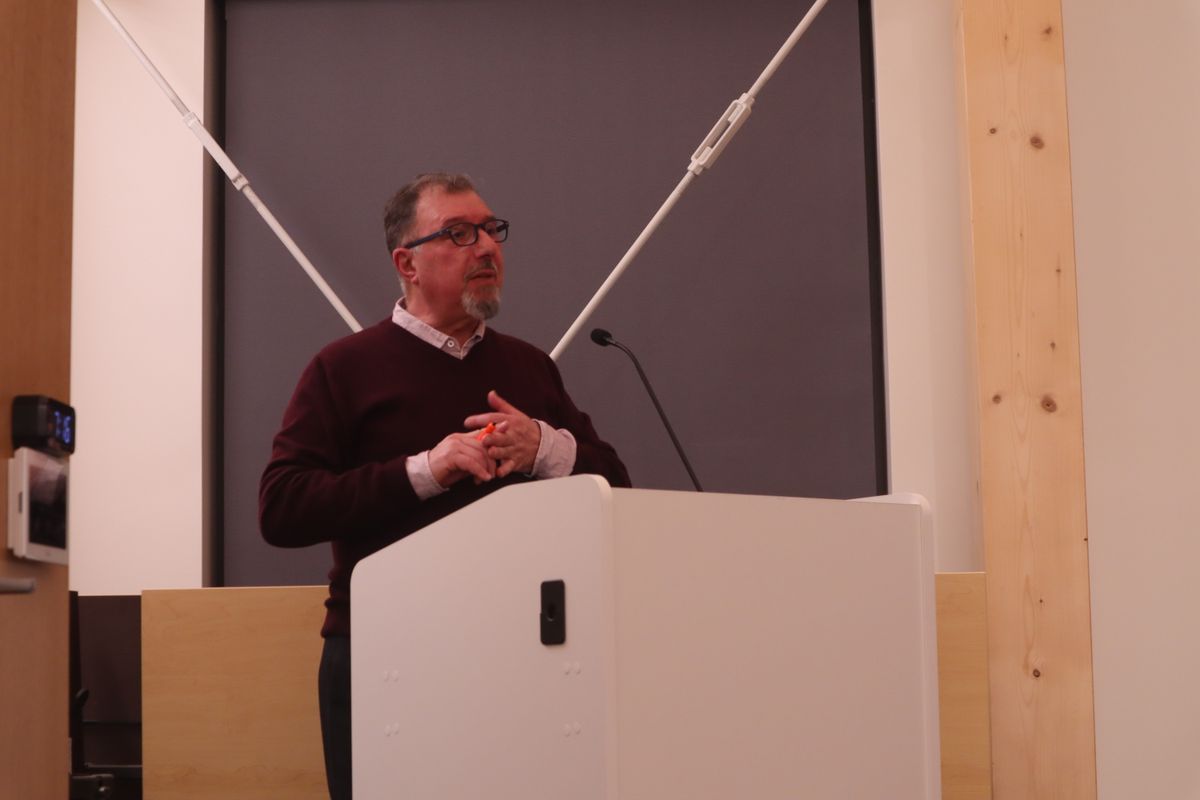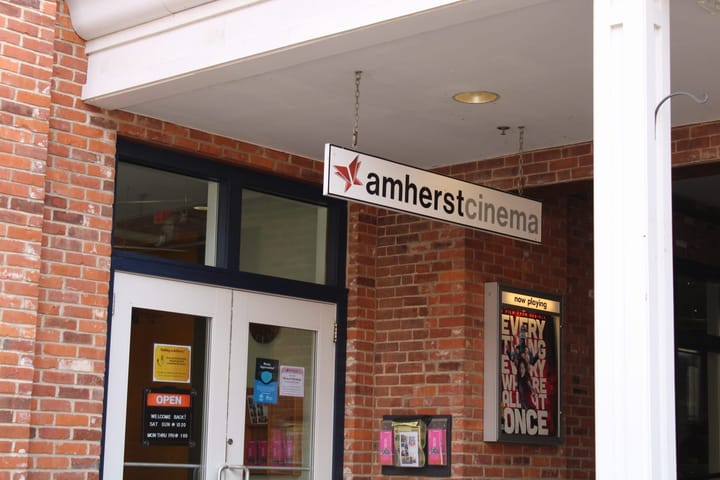“Where do we go from here?”: Khalidi Concludes Palestine Lecture Series
Khalidi finished his three-part lecture series by discussing potential futures in the Israel-Palestine conflict. He emphasized the need for a ceasefire and analyzed what he calls the “one-state reality” in the region.

On March 6, Dr. Ahmad Samih Khalidi gave the last lecture of his three-part series, speaking about the possible outcomes of the current war in Gaza.
The final lecture was titled “Palestine/Israel: Where are We Heading? Hopes and Delusions: The One State Reality and the Gaza Aftermath.” In the lecture, Khalidi described what he referred to as the “one-state reality” in Palestine and the difficulties this reality poses for long-term solutions to the conflict, including the possibility of any two-state solution.
Professor of History and Asian Languages and Civilizations Monica Ringer introduced the event, as she had for the previous talks. She credited Professor of Anthropology Chris Dole and senior managing editor Stacey Zhang ’26 for helping to organize the talks and calling campus attention to the situation in Palestine.
Although the event attracted a slightly diminished audience compared to the first two parts of the series, the Lyceum room in which it was held was still undeniably packed.
Khalidi, a Palestinian writer and former advisor to Palestinian Authority presidents Yasser Arafat and Mahmoud Abbas, began the talk by recounting the Oct. 7 Hamas attack, noting numerous kidnappings and sexual violence. He then discussed the subsequent Israeli assault on Gaza, detailing the widespread destruction of Gazan civic life.
“Where do we go from here?” he asked.
Khalidi examined possible next steps for Israel-Palestine. He spoke favorably of a ceasefire, out of concern for casualties in Gaza and possible ripple effects in the region.
“A ceasefire is not only imperative,” he said, “but any further delay risks inciting new conflicts [in the Middle East].”
Khalidi talked about the rehabilitation of the Gaza Strip, emphasizing the high cost of rebuilding Gazan infrastructure. He referenced Harvard University Senior Research Scholar Sara Roy, who has described Gaza as in a state “de-development” — negative economic growth.
Khalidi discussed long-term solutions for the conflict, again expressing his doubts about the possibility of both a two-state solution and the existence of what he referred to as the “one-state reality,” which he described as “one in which Israel controls all the internal and external borders of the land … from the river to the sea.”
“What the war exposes,” Khalidi said, “is the non-viability of a Palestinian-Israeli status quo.”
Despite the enforced separation of Israelis and Palestinians, Khalidi emphasized the numerous interactions between the different groups.
“The two people are normally separated by fences, walls, and armed guards, yet with a high degree of mutual permeability,” he said, referencing the many Palestinians working and living in Israel.
Since the war, Israel has suspended all Palestinian labor — despite its dependence on it.
Khalidi also named the interspersion of Israeli settlements and Palestinian territories in the West Bank as another obstacle to a two-state solution.
“I see no visible circumstance in which an Israeli leader will be willing to evacuate tens of thousands of settlers to make way for a viable and contiguous state,” he said.
Khalidi criticized the Israeli extreme right, led by Prime Minister Benjamin Netanyahu, which he described as “intoxicated with its hold on power,” fomenting disgust with the Israeli government among and beyond its populace.
Although Khalidi repeatedly stressed the infeasibility of a two-state solution throughout his talk, he noted that the “one-state reality” greatly marginalized Palestinians. “If partition is not a real option,” Khalidi said, “then our challenge is to transform the one-state reality [from] a[n] imposed construct to a mutually agreeable one”.
Possible shapes that the future one-state could take include the Swiss model, Khalidi suggested — a version of a federation in which decision-making would occur at a local level.
Regarding the Oslo Accords (which he was present for), he said, “I cannot see this happening again. There may be papers signed, but they will not signify what they pretend.”
He spoke of peace as a “long-term, winding, and uncertain process.”
He reiterated his previously expressed support for a solution that would enable Israeli-Palestinian coexistence beyond dominant notions of nationalism, saying, “One very slender thread is to begin to think outside the box of nation-state-ism and traditional notions of national self-determination … We should be open to any restructuring of it that allows Palestinians and Israelis to live in peace.”





Comments ()